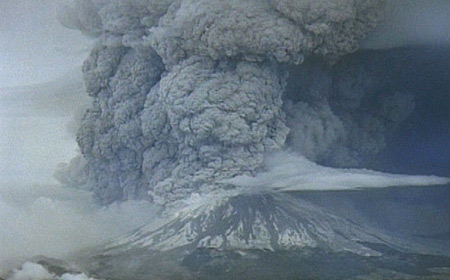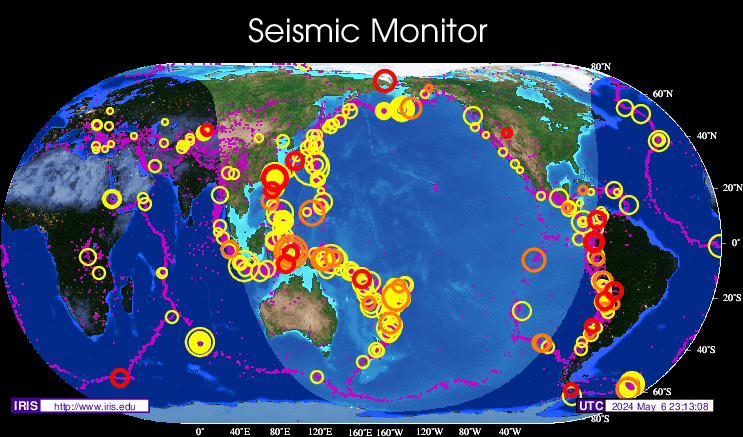Recent Kilauea Status Report. Lava on the rise at Kilauea, within 235 feet of Halemaumau floor. It's risen almost 400 feet from 2009 . "We've seen since November, just sort of a gradual increase in the height of the lava lake. Much of the rise has just taken place over the last few days with Kilauea shivered with 2 dozen small earthquakes. The lake has risen 262 feet since November. Magma is building up at the summit. (Source: West Hawaii Today -Sunday February 13, 2011)
Seventeen earthquakes were strong enough to be located within Kilauea volcano - seven were located within the upper east rift zone, three beneath the summit caldera, and seven on south flank faults; the ongoing seismicity within the upper east rift zone seemed to peak around the magnitude-3.8 quake Thursday morning but we will continue to watch this area closely.
The summit gas plume was wispy, almost invisible, and rising vertically. The most recent (preliminary) sulfur dioxide emission rate measurement was 400 tonnes/day on February 8, 2011 averaged over at least one high lava stand during which the emissions may be halved; new measurements must await the return of moderate trade winds. In addition to gas, the plume wafted small amounts of ash-sized tephra, mostly fresh spatter, that were deposited on nearby downwind surfaces.
http://volcanoes.usgs.gov/hvo/activity/kilaueastatus.phpEarthquake swarm just part of new Kilauea activityHAWAII VOLCANOES NATIONAL PARK (HawaiiNewsNow) - Scientists at the Hawaiian Volcano Observatory on the Big Island of Hawaii are looking at a swarm of small earthquakes that shook Kilauea Volcano last week.
There were at least 42 earthquakes in the area within a 24 hour period that started Thursday. Geophysicists said while the temblors have diminished, they are another clue in what may come next at the world's most active volcano.
"Kilauea's summit has been extending, meaning that more magma is coming up to the summit than is going out to the east rift zone," said Jim Kauahikaua, the observatory's scientist in charge. That means there's move lava underground that's headed toward the actual Kilauea caldera, rather than the zone where most of the activity has been in the volcano's 28 year long eruption.
According to Kauahikaua, the extension of the crater has been going on for a few months.
"This extension of the summit is also reflected in the rise in lava in the Halemaumau vent," he said.
"All of them are indications that pressure is increasing in the magma chamber below the summit."
Besides spewing smoke and giving visitors a good show, the Halemaumau vent has served as a window to what's going on beneath the summit since it opened up about three years ago. Lava has been rising in the vent, and is now just 260 feet below the crater's surface.
read more at
http://www.hawaiinewsnow.com/Global/story.asp?S=14022682



















